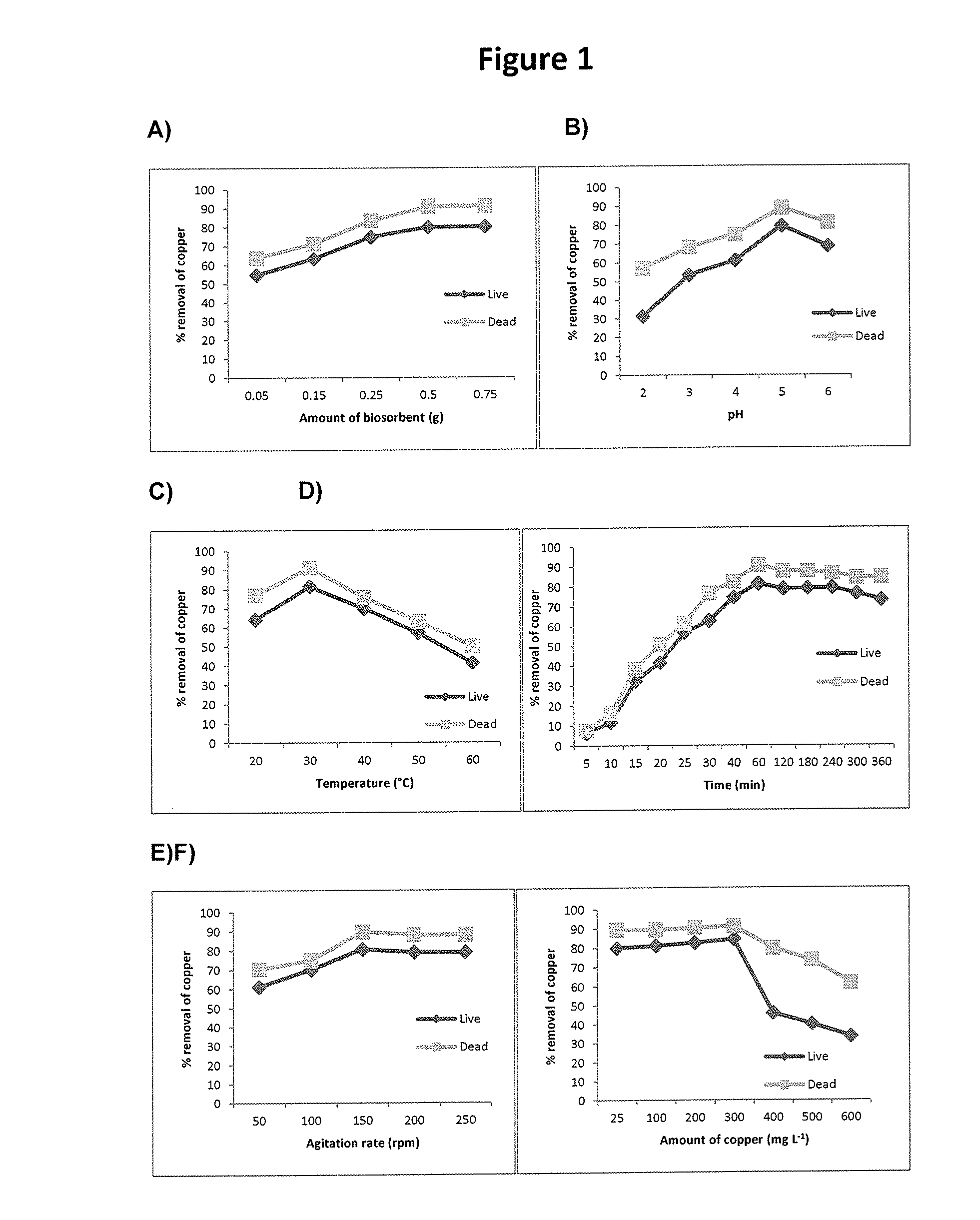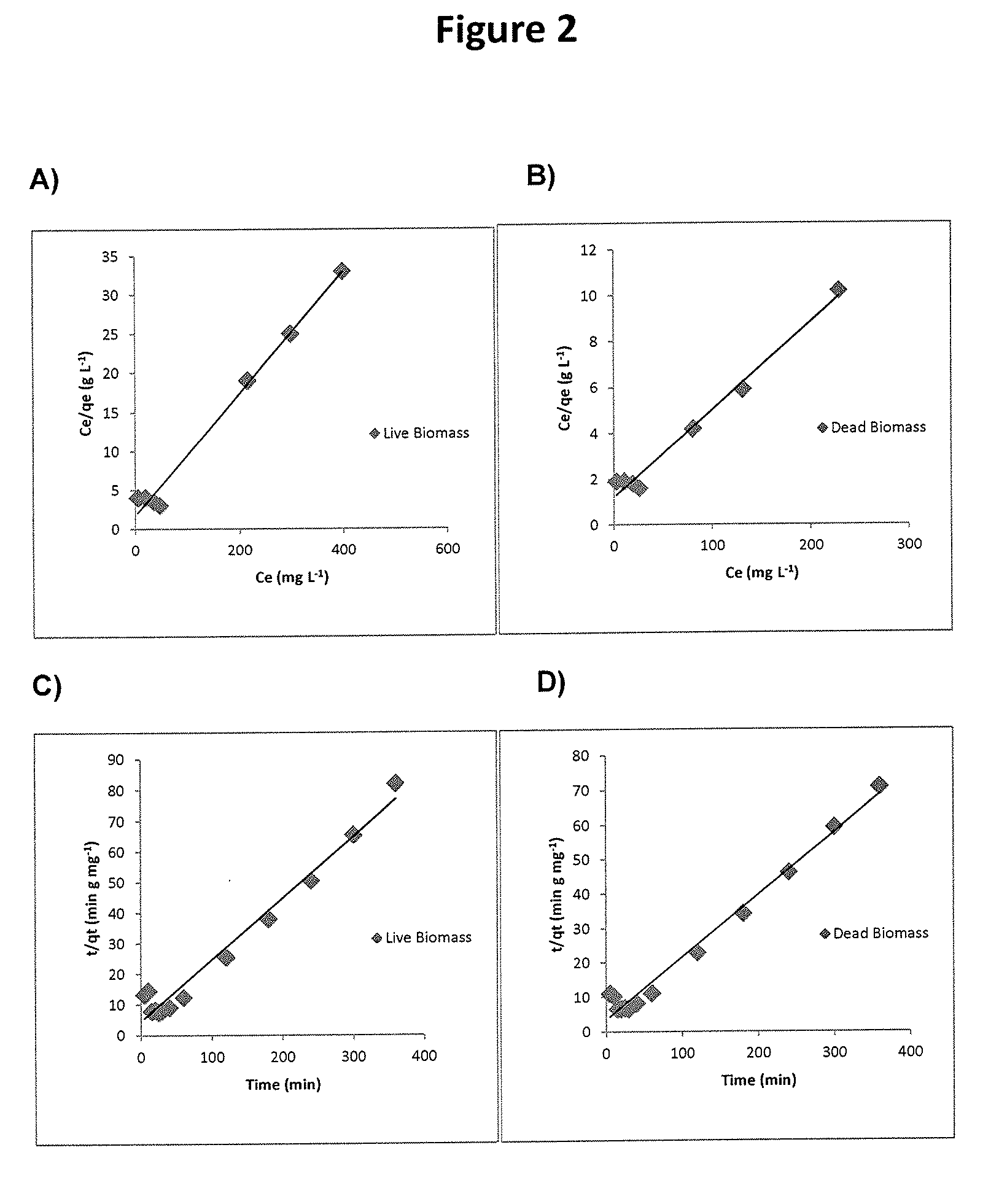Process for obtaining copper nanoparticles from rhodotorula mucilaginosa and use of rhodotorula mucilaginosa in bioremediation of wastewater and production of copper nanoparticles
- Summary
- Abstract
- Description
- Claims
- Application Information
AI Technical Summary
Benefits of technology
Problems solved by technology
Method used
Image
Examples
Embodiment Construction
[0017]A biological system for the biosynthesis of nanoparticles and uptake of copper from wastewater using dead biomass of R. mucilaginosa was analyzed and described for the first time.
[0018]In the present invention, it is explored for the first time the intracellularly biosynthesis and uptake of copper nanoparticles from wastewater utilizing the dead biomass of the yeast R. mucilaginosa.
[0019]In the present invention, it is developed a synthetic strategy for the biosynthesis and removal of copper nanoparticles which is fast, low cost, environment friendly and easily scalable, using as a reduction agent the yeast R. mucilaginosa.
[0020]The present invention refers to a process for obtaining copper nanoparticles from R. mucilaginosa comprising the following steps:[0021]a. Isolation of the fungus R. mucilaginosa; [0022]b. Determination of copper tolerance of the isolated fungus of step a;[0023]c. Preparation of a copper stock solution;[0024]d. Addition of said isolated fungus in the ...
PUM
| Property | Measurement | Unit |
|---|---|---|
| temperature | aaaaa | aaaaa |
| concentrations | aaaaa | aaaaa |
| temperature | aaaaa | aaaaa |
Abstract
Description
Claims
Application Information
 Login to View More
Login to View More - R&D
- Intellectual Property
- Life Sciences
- Materials
- Tech Scout
- Unparalleled Data Quality
- Higher Quality Content
- 60% Fewer Hallucinations
Browse by: Latest US Patents, China's latest patents, Technical Efficacy Thesaurus, Application Domain, Technology Topic, Popular Technical Reports.
© 2025 PatSnap. All rights reserved.Legal|Privacy policy|Modern Slavery Act Transparency Statement|Sitemap|About US| Contact US: help@patsnap.com



